Australia experienced its warmest autumn on record
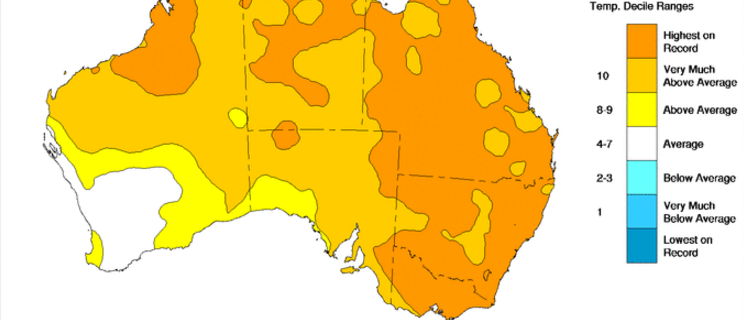
Autumn 2016 was the warmest ever recorded in Australia, the Bureau of Meteorology (BOM) reported. Record-breaking temperatures were reported across much of eastern and northern Australia while average or below average temperatures were observed only in the southern part of Western Australia. The heatwave that swept the countries in March set the record for the warmest March in history.
The mean temperature recorded this autumn was 1.86 °C above average. The second warmest autumn on record occurred in 2005 when the observed temperature was 1.64 °C above average. Mean temperatures reported across all States and Territories were ranked among the top five warmest autumns, as they beat previous records for almost all of the eastern mainland States, northern and central parts of the Northern Territory, northwest Western Australia and southern Tasmania. New record temperatures were set for Queensland, New South Wales, Victoria and the Northern Territory. In summary, about half of the country had the warmest autumn ever.
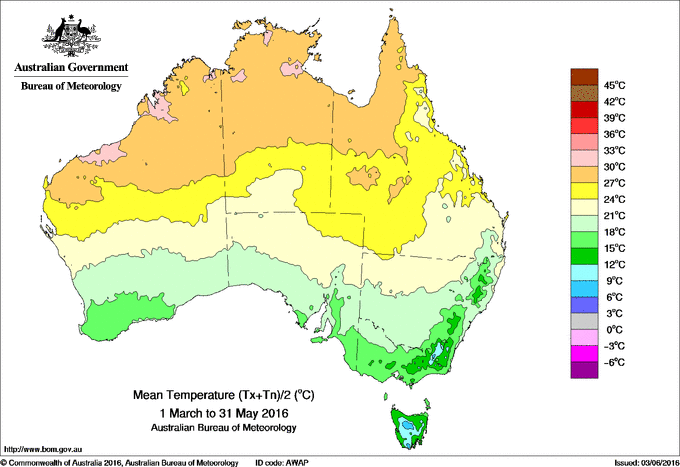
Image credit: BOM
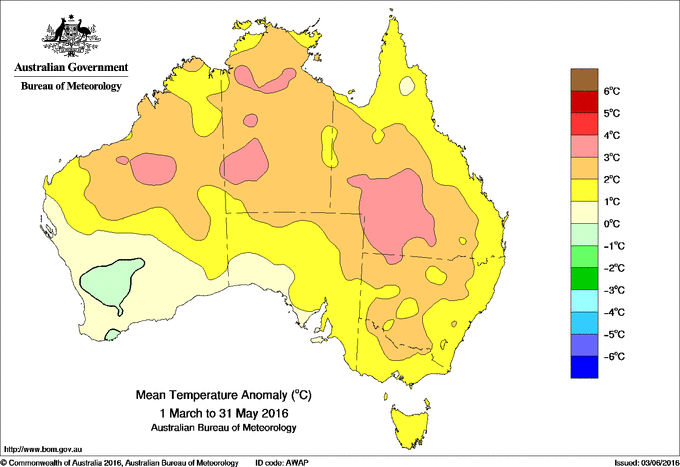 Image credit: BOM
Image credit: BOM
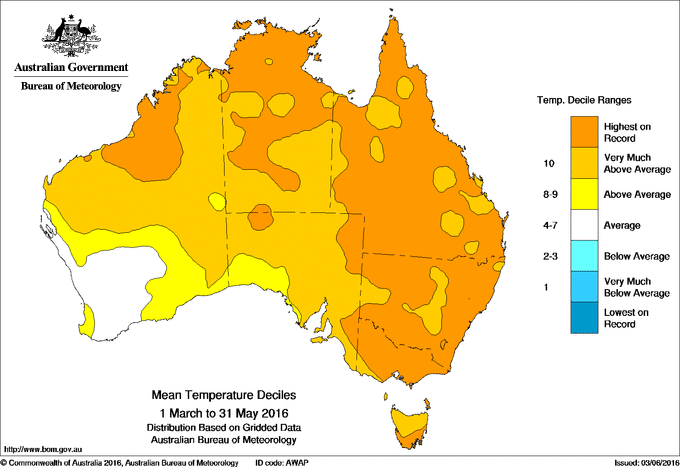 Image credit: BOM
Image credit: BOM
An intense and prolonged heatwave marked the beginning of the autumn in March. Numerous monthly temperature records were set during the early part of March and May, in northern Australia in particular. The second half of May was marked by the dropping temperatures in southern Australia. However, the warmer than average conditions continued until the end of the month in the northern part. 38 °C (100.4 °F) was measured at Bradshaw in Northern Territory and Wyndham in Western Australia on May 27, setting the new late season's records.
Hottest day of the season with a temperature of 47 °C (116.6 °F) was recorded at Mardie in Western Australia on March 3.
Record-setting maximum temperatures were reported across the regions extending from southern New South Wales, northwest Victoria, eastern Victoria, eastern New South Wales to the southern and central Queensland, portions of the central and northern Northern Territory, parts of Kimberley and Pilbara regions in Western Australia. The maximum temperature for the entire continent was 1.84 °C above average.
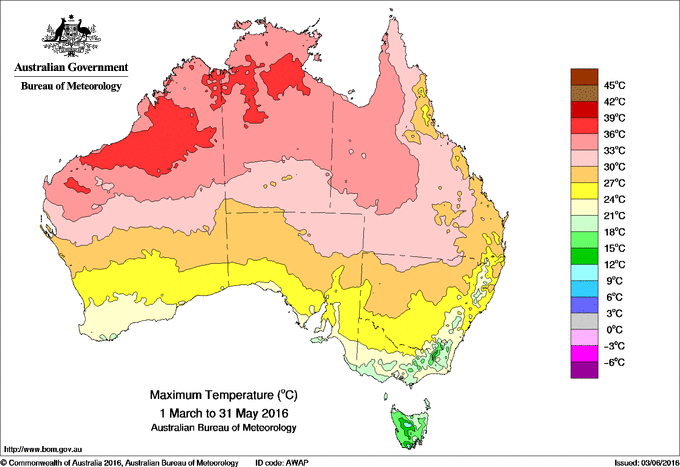
Image credit: BOM
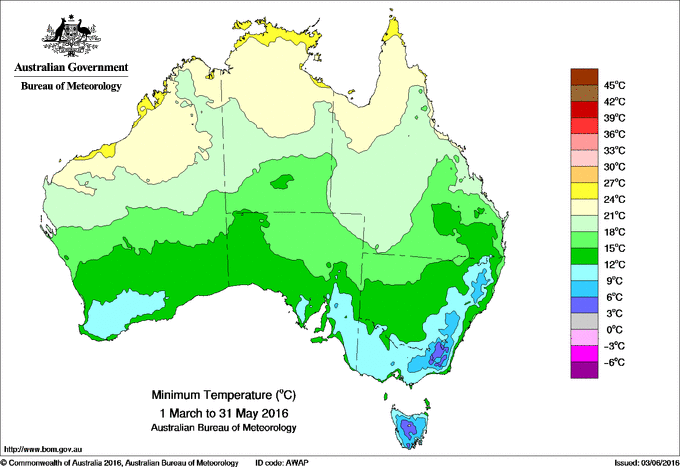 Image credit: BOM
Image credit: BOM
Minimum autumn temperatures were above average for the almost entire country. The highest recorded values were reported across large parts of Tasmania, southern Victoria, a broad region extending from northwest New South Wales into northeast South Australia and up to western Queensland to Cape York Peninsula, parts of Northern Territory, and the Pilbara and Gascoyne in Western Australia. About 30% of the country measured record high minima, and a major part of the rest of the territories experienced minimum temperatures warmer than average.
Average rainfall across the country was close to the usual, although with considerable regional variation. Above average amounts of precipitation were reported across most of the outback of South Australia with smaller areas in western Queensland and southern Cape York Peninsula, the southwest Northern Territory, southwest Western Australia, and parts of western Tasmania.
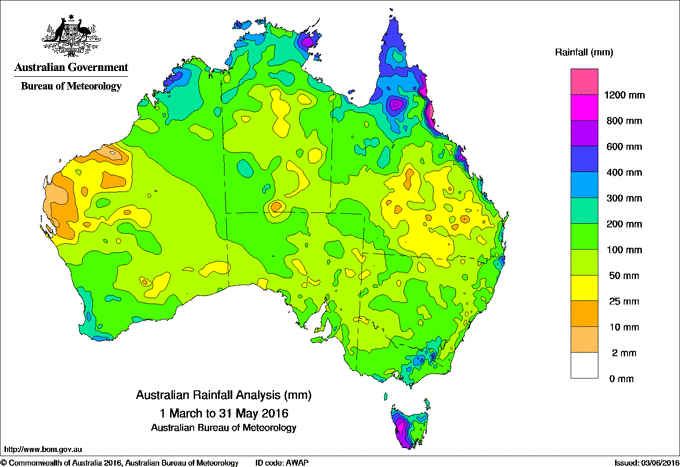
Image credit: BOM
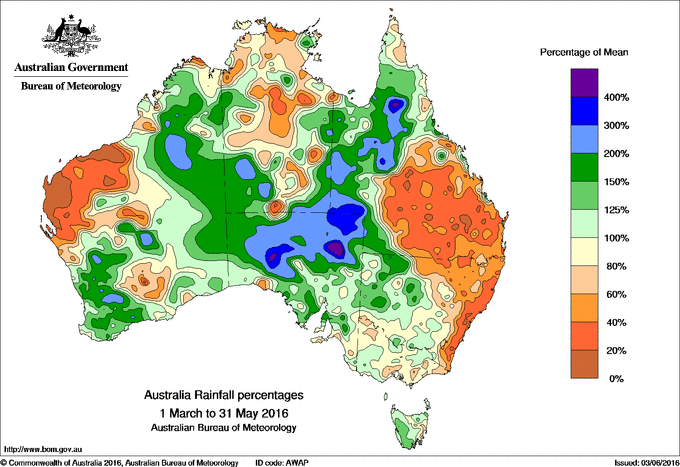 Image credit: BOM
Image credit: BOM
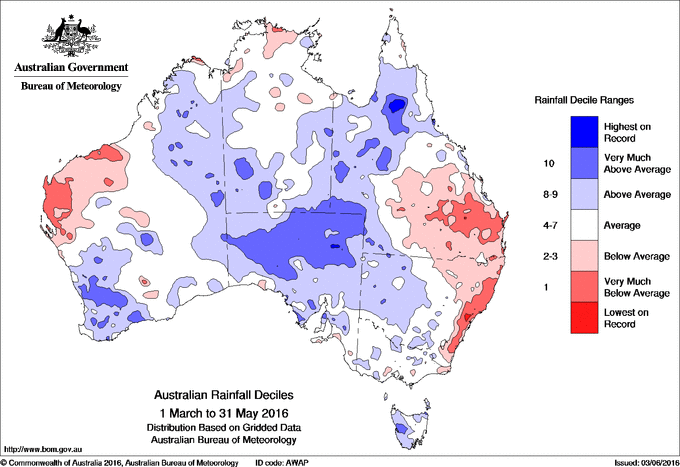 Image credit: BOM
Image credit: BOM
Wettest day of autumn was May 22 with 274 mm (10.8 inches) recorded at Hazelmere in Queensland.
Regions of coastal New South Wales, portions of eastern Queensland south of the tropics, parts of the Pilbara and Gascoyne in Western Australia observed below average rainfall. In Victoria, southeast South Australia, the tropical east coast of Queensland, and the majority of the northern half of the Northern Territory reported near normal amounts of precipitation.
Featured image credit: BOM

Commenting rules and guidelines
We value the thoughts and opinions of our readers and welcome healthy discussions on our website. In order to maintain a respectful and positive community, we ask that all commenters follow these rules:
We reserve the right to remove any comments that violate these rules. By commenting on our website, you agree to abide by these guidelines. Thank you for helping to create a positive and welcoming environment for all.